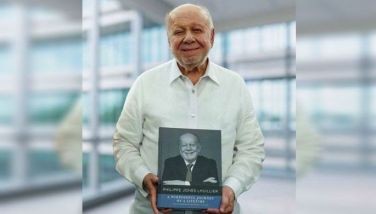Fortune’s smile
June 10, 2002 | 12:00am
For Fortune Medicare, Inc., the key to continued growth is computerization. "It took us six years to complete our computerization since there was no readily available software on the market. We spent between P30 million and P35 million to develop the software alone,"said Fortune Medicare president J. Antonio Cabangon.
The company currently uses a Health Pro system, which immediately comes up with the medical and package benefits of a cardholder. The company has also developed the Hospital Access Network system, a website-based link to hospitals which is currently being tested in Metro Manila.
The health maintenance organizations or the HMO industry is estimated to have grown 45% annually for the past five years as the costs of medical treatment for individuals have gone up. During the same period, however, inefficiencies have closed about two HMOs every year.
"The margins are very small," said Cabangon. "If you are not computerized, every time a cardholder comes in, you have to look for that single folder in a room full of folders. That’s why it takes a while before everything about the cardholder – from his medical records to his payments – can be evaluated."
Fortune’s efforts to go digital is starting to pay off. Last year, the company registered modest profits, a dramatic shift from the purpose of Cabangon’s father, Antonio Cabangon-Chua, when he started the company 17 years ago. At that time, the older Cabangon-Chua saw Fortune as a way of giving back something to society. As such, profit was not a priority. "For the services to continue, it is inevitable that the company has to remain in the black," said the younger Cabangon.
Most of Fortune’s cardholders are teachers, policemen and vendors. Not surprisingly, the C-D-E markets have been diligent in their payments. Fortune also handles corporate accounts although the packages and payments are smaller than those offered their original beneficiaries.
To meet the needs of its cardholders, Fortune has 15 clinics nationwide and plans to open 20 more in the near term. The investment in a clinic with the latest medical equipment is about P10 million.
"Later on, we want to develop the clinics to become ambulatory, which can do light surgeries and have lying-in facilities. That’s the trend in the United States," he said.
To further improve its efficiency, the company is also pushing for early detection and proper diagnosis of cardholder- patients.
"The industry has to have a definite structure to lessen its mortality rate. There is a need for government to regulate the industry not in terms of pricing but in terms of setting the necessary safeguards to insure that the public is not short-changed," he said.
For example, the minimum capital requirement for HMOs should be increased to at least P50 million. A buffer fund or reserve requirement should also be put up to insulate the cardholders from their HMOs should they close up.
At the end of the day, however, the prevention of disease through awareness and early detection is still the best strategy for both the cardholder and his HMO.
The company currently uses a Health Pro system, which immediately comes up with the medical and package benefits of a cardholder. The company has also developed the Hospital Access Network system, a website-based link to hospitals which is currently being tested in Metro Manila.
The health maintenance organizations or the HMO industry is estimated to have grown 45% annually for the past five years as the costs of medical treatment for individuals have gone up. During the same period, however, inefficiencies have closed about two HMOs every year.
"The margins are very small," said Cabangon. "If you are not computerized, every time a cardholder comes in, you have to look for that single folder in a room full of folders. That’s why it takes a while before everything about the cardholder – from his medical records to his payments – can be evaluated."
Fortune’s efforts to go digital is starting to pay off. Last year, the company registered modest profits, a dramatic shift from the purpose of Cabangon’s father, Antonio Cabangon-Chua, when he started the company 17 years ago. At that time, the older Cabangon-Chua saw Fortune as a way of giving back something to society. As such, profit was not a priority. "For the services to continue, it is inevitable that the company has to remain in the black," said the younger Cabangon.
To meet the needs of its cardholders, Fortune has 15 clinics nationwide and plans to open 20 more in the near term. The investment in a clinic with the latest medical equipment is about P10 million.
"Later on, we want to develop the clinics to become ambulatory, which can do light surgeries and have lying-in facilities. That’s the trend in the United States," he said.
To further improve its efficiency, the company is also pushing for early detection and proper diagnosis of cardholder- patients.
"The industry has to have a definite structure to lessen its mortality rate. There is a need for government to regulate the industry not in terms of pricing but in terms of setting the necessary safeguards to insure that the public is not short-changed," he said.
For example, the minimum capital requirement for HMOs should be increased to at least P50 million. A buffer fund or reserve requirement should also be put up to insulate the cardholders from their HMOs should they close up.
At the end of the day, however, the prevention of disease through awareness and early detection is still the best strategy for both the cardholder and his HMO.
BrandSpace Articles
<
>
- Latest
Latest
Latest
October 16, 2024 - 4:00pm
By Aian Guanzon | October 16, 2024 - 4:00pm
October 1, 2024 - 9:00am
October 1, 2024 - 9:00am
September 27, 2024 - 4:00pm
September 27, 2024 - 4:00pm
September 12, 2024 - 2:10pm
September 12, 2024 - 2:10pm
September 1, 2024 - 12:00am
September 1, 2024 - 12:00am
August 27, 2024 - 11:10am
August 27, 2024 - 11:10am
Recommended






























